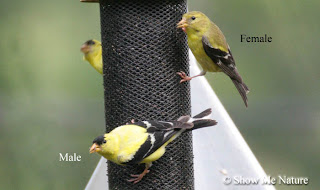With the arrival of Autumn Equinox last weekend, the hours of
daylight will continue to shorten and the nights grow long until the
Winter Solstice. On the surface, life seems to be slowing down on the
prairie, but in reality, the plants and animals are busy preparing for
the upcoming cold months.
 |
| Mantid Ootheca |
Last week I found a Chinese Praying Mantis (
Tenodera sinensis)
ootheca, or egg case. A female mantis will choose a weed or other sturdy plant stem about 4
feet off the ground and begin the process of laying the ootheca and
eggs. The eggs are usually arranged in rows near the plant stem, and on
either side of the eggs, the female mantis lays a frothy, brown
material filled with air. Initially this protective material is sticky
and soft, but when it dries, this outer part of the case will be hard
and water repellant. The female begins laying ootheca in August and can
leave as many as 15 egg cases before she dies. Each ootheca can have up
to 400 eggs. The eggs will survive the winter months within the ootheca
and the
nymphs hatch in late spring or early summer. These tiny mantids disperse on the wind and will
molt up to 7 times before they reach adulthood.
There was one woolly bear caterpillar looking for food in the prairie.
This fuzzy caterpillar is one of the many tiger moth species that belong
in the Arctiidae family. These active caterpillars are covered in
short, dense hairs and are always on the move searching for food and a
safe place to
overwinter.
 |
| Woolly Bear caterpillar |
 |
| Monarch Butterfly on Goldenrod |
Monarch migration has begun. Each fall, these butterflies fly to Mexico for the winter. The Monarchs that emerge in late summer to early fall are the ones that make the trip. This generation of Monarchs will not mate or lay eggs, rather they prepare for the long trip south. They need to store enough fat to travel and survive the winter months. This is an area of interest for scientists, as it is not known exactly how these butterflies store enough energy to survive such a difficult journey and live until spring. Amazingly, these same butterflies will migrate up north once spring arrives to reproduce.
There are a
few hundred American Goldfinches feeding on the seed heads in the
prairie and it appears that the young Goldfinches have mastered the art
of foraging.
 |
| American Goldfinch |
 |
| Illinois Bundleflower |
The plants at the Ecology Center have gone to seed. This means that the plant uses its energy for creating seeds instead of growing. The seed head on this Illinois Bundleflower
(Desmanthus illinoensis) is dried and ready to be dispersed. Illinois Bundleflower is an important food source for animals and botanists often use this plant when creating a restored prairie.
 |
| Ohio Buckeye |
The seed pods from the Ohio Buckeye (
Aesculus glabra) trees bordering the prairie have matured and are dropping to the ground. These seeds are covered by a rough, warty pod, and each capsule can house up to 3 seeds. Ohio Buckeyes prefer moist habitat, and can be found along streambanks and river bottoms. The seeds contain tannic acid and are poisonous to humans and livestock, but constitute a small percentage in the diets of squirrels and deer.
Stay tuned for next month's natural events!
Glossary
Cocoon: a silk web that encloses the pupae of many moths, but not butterflies.
Forage: the act of searching for food.
Molt: the act of shedding skin. A monarch larva will molt its skin as it becomes too large for its former skin.
Nymph: Immature stage of an insect with simple metamorphosis
Ootheca: An ootheca (plural oothecae) is an egg mass produced by several
different groups of insects, including Praying Mantids and Cockroaches. Oothecae contain many eggs with a protective outer
covering.
Overwinter: to remain alive throughout the winter.
Pupate: to change from a larva (caterpillar) to a pupa (cocoon or chrysalis)




















